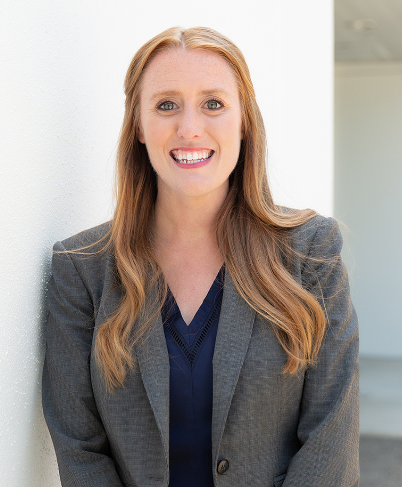Cash Flow Projections for Long-term Lending
One of the most basic analytical and underwriting tools a banker must have is the ability to determine whether a borrower can repay its loans based on the financial information available.
First, the session will explain the interrelationships among revenue projections, the expenses needed to support the sales growth as well as the working capital assets, fixed assets, and liabilities necessary to support revenue growth. Second, the session will offer tips on how to analyzing underlying assumptions such as profitability, productivity, efficiency, and earnings retention.
Join Dev Strischek in this critical lending webinar as he shows how to use a borrower’s historic financials to project balance sheet, income statement, and cash flows over the term of a loan.
- Critical role of revenues in projecting financial statements and cash flow
- Projection of income statement, balance sheet and cash flow to calculate loan needed to support projection and ability of the borrower to repay the loan
- Evaluation of underlying assumptions including the feasibility of revenue growth rate, profitability, productivity, efficiency, earning retention, and leverage
- Calculation of loan amount needed to support financial projection and borrower’s repayment ability
- Analysis of asset collateral base available to support repayment
- Learn how revenue projection determines income statement and income statement determines balance sheet
- Learn critical role of working capital assets, capital expenditures and retained earnings in supporting projection
- Learn how to generate cash flow projection with balance sheet and income statement
- Learn how to estimate loan needed to realize financial projections
- Learn how to underwrite loan needed to fit lending organization’s policies
- Learn how to support loan with appropriate collateral and guarantees
One of the most basic analytical and underwriting tools a banker must have is the ability to determine whether a borrower can repay its loans based on the financial information available.
Financial organizations extend credit to borrowers when the borrowers show the ability to repay the loans extended. Ideally, a request for a five-year loan should be supported by a 5-year cash flow projection.
Learn key assumptions in a projection and how to assess validity, the value of a downside-most likely projection to stress test the assumptions.
The webinar will be beneficial for:
- Credit Analysts
- Credit Managers
- Loan review officers
- Work-out officers
- Commercial lenders
- Credit Risk Managers
- Risk Managers
- Enterprise Risk Managers
- Chief Credit Officers
- Senior Lenders
- Senior Lending Officer
- Bank Director
- Chief Executive Officer
- President
- Board Chairman
A frequent speaker, instructor, advisor and writer on credit risk and commercial banking topics and issues, Martin J. "Dev" Strischek principal of Devon Risk Advisory Group based near Atlanta, Georgia. Dev advises, trains, and develops for financial organizations risk management solutions and recommendations on a range of issues and topics, e.g., credit risk management, credit culture, credit policy, credit and lending training, etc. Dev is also a member of the Financial Accounting Standards Board’s (FASB’s) Private Company Council (PCC). PCC’s purpose is to evaluate and recommend to FASB revisions to current and proposed generally accepted accounting principles (GAAP) that are more appropriate for privately held firms. He also serves as the PCC’s representative to FASB’s Credit Losses Transition Resource Group supporting the new current expected credit loss (CECL) standard to be implemented in fiscal year 2019 for public companies and 2020 for private firms.
The former SVP and senior credit policy officer at SunTrust Bank, Atlanta, he was responsible for developing, implementing, and administering credit policies for SunTrust’s wholesale lines of business--commercial, commercial real estate, corporate investment banking, capital markets, business banking and private wealth management. He also spent three years as managing director and credit approver in SunTrust’s Florida commercial lending and corporate investment banking areas, respectively. Prior to SunTrust, he was chief credit officer for Barnett Bank’s Palm Beach market. Besides stints at other banks in Florida, Kansas City, and Ohio, his experiences outside of banking include CFO of a Honolulu construction company, combat engineer officer in the U.S. Army, and college economics instructor.
A graduate of Ohio State University and the ABA Stonier Graduate School of Banking, Dev earned his M.B.A. from the University of Hawaii. Mr. Strischek serves as an instructor in several banking schools, including the Stonier Graduate School of Banking, and the Southwest Graduate School of Banking. His school, conference, and workshop audiences have included participants drawn from the ABA, RMA, OCC, Federal Reserve, FDIC, FFIEC, SBA, the Institute of Management Accountants (IMA) and the AICPA.
Mr. Strischek has written some 200 articles on credit risk management, financial analysis and related subjects, and he is the author of Analyzing Construction Contractors and instructor of a contractor analysis workshop. A past national chair of RMA and former RMA Florida Chapter president, Dev has consulted on credit risk issues with banks in Morocco, Egypt, and Angola through the US State Department’s Financial Service Volunteer Corps (FSVC).
Upcoming Webinars











































































